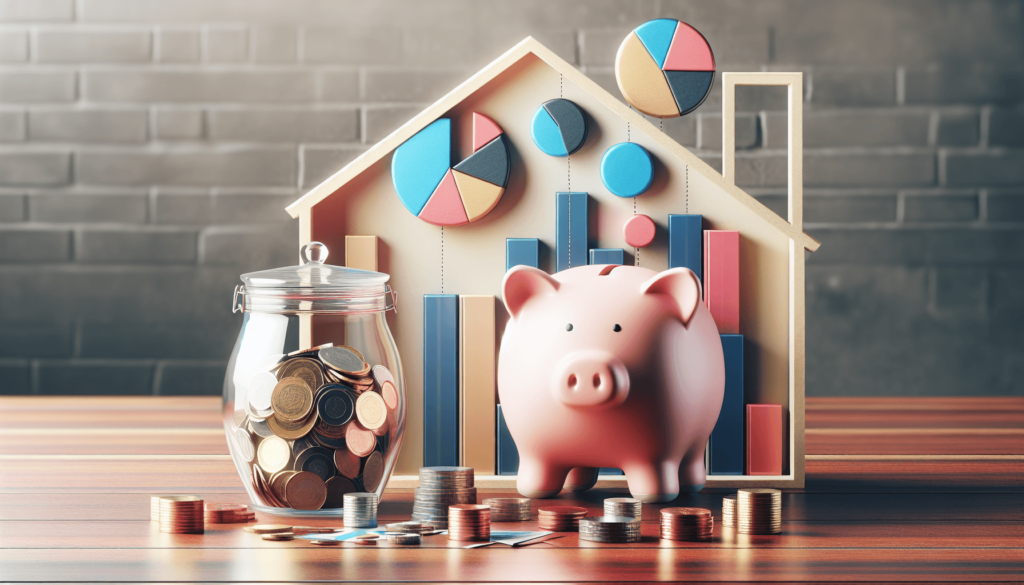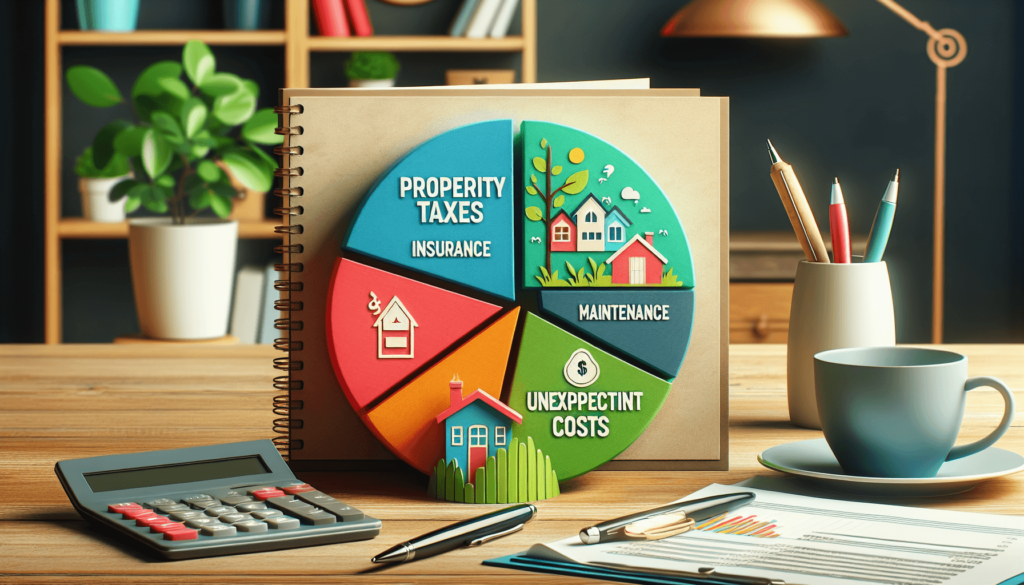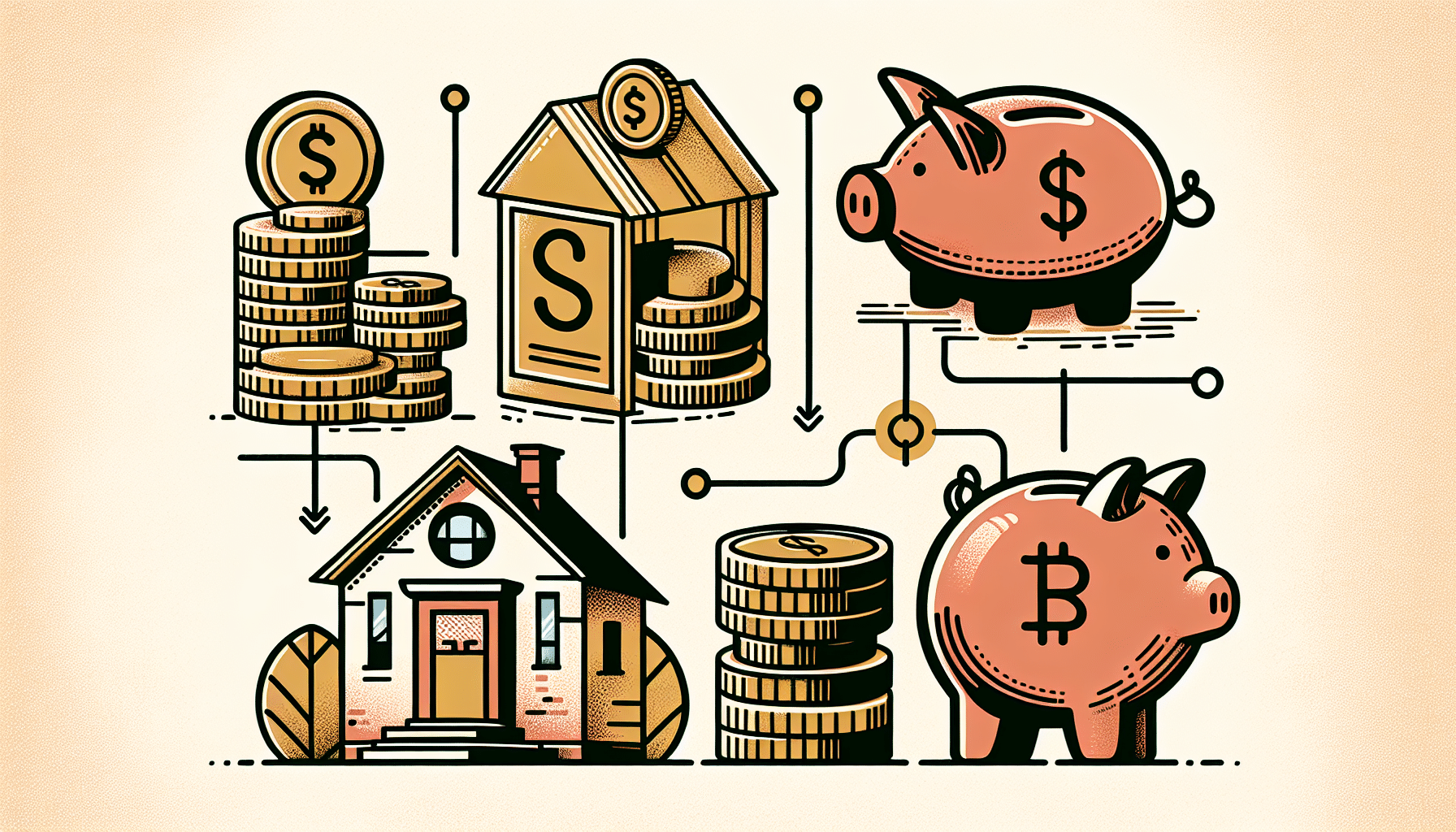Understanding how to plan finances for home ownership is key to turning the key in your new front door. Our guide cuts through the complexity, offering practical advice for evaluating your financial readiness, saving for initial expenses, grasping mortgage essentials, and budgeting for ongoing home costs. Simple steps lead to significant milestones in preparing for the exciting leap to homeownership.
Key Takeaways
- Financial readiness for homeownership requires evaluating your credit score, debt-to-income ratio, and monthly debt obligations to determine mortgage eligibility and favorable loan terms.
- Successful home purchase preparation involves saving for a down payment, closing costs, and establishing an emergency fund to handle unexpected expenses and maintenance costs associated with property ownership.
- Understanding mortgage options and navigating the home buying process, including securing a mortgage, choosing a real estate agent, and negotiating the purchase price, are crucial steps toward homeownership.
Assessing Your Financial Readiness for Homeownership

Before exploring the multitude of property listings, the initial step is to evaluate your financial health. Are you ready to take on the financial responsibility of homeownership? It’s not just about being able to make your monthly mortgage payments. You should possess a comprehensive understanding of your financial readiness, which includes aspects such as your credit score, debt-to-income ratio, and monthly debt obligations.
A robust credit score significantly improves your chances of securing favorable mortgage terms. Meanwhile, your debt-to-income ratio and monthly debt obligations give mortgage lenders an insight into your financial stability. These factors play a critical role in determining your eligibility for a mortgage and influence your journey towards homeownership.
Credit Score Insights
Your credit score is more than just a number; it’s a reflection of your financial health. It plays a pivotal role in securing a mortgage, influencing your mortgage interest rates and down payment requirements. Aiming for a credit score over 700 is recommended to secure lower interest rates on a mortgage.
Interestingly, multiple inquiries from mortgage lenders within a short period are considered a single inquiry and will have minimal impact on your credit score. This is particularly helpful when shopping around for the best mortgage rate.
Regular monitoring of your credit report can help you maintain a healthy credit score, ensuring accuracy before applying for a mortgage.
Analyzing Debt-to-Income Ratio
Your debt-to-income ratio is a vital metric that lenders use to assess your ability to manage your monthly payments effectively. It’s calculated by dividing the sum of your monthly debt payments and the projected mortgage payment by your monthly pre-tax income, also known as your monthly income. Generally, lenders prefer a debt-to-income ratio below 36%, but to qualify for most mortgages, it must fall below 43%.
A high debt-to-income ratio can result in mortgage denial or a decrease in the loan amount. Hence, improving this ratio, either by lowering debt or increasing income, is necessary to boost your mortgage approval odds.
Monthly Debt Obligations
Before dreaming about your future home’s architecture, it’s critical to manage your existing debt. Your financial capacity, factoring in various aspects of your financial situation, is a key determiner for mortgage eligibility.
Your income, employment history, savings, and monthly debt payments are essential components when determining your financial capacity for a mortgage. Ensuring that your monthly debt payments remain manageable is crucial for maintaining financial stability upon adding a mortgage payment to your financial obligations.
Crafting a Savings Strategy for Down Payment and Closing Costs

The journey towards homeownership involves more than just securing a mortgage. It requires a solid financial plan to spend money on the down payment and closing costs. Saving for these significant expenses can seem daunting, but with proper planning, it is achievable.
Your home purchase capital consists not only of cash in savings accounts but may also include investment accounts and other assets that can be swiftly liquidated. This flexibility can prove advantageous when saving for a down payment and closing costs.
Building an Emergency Fund
Establishing an emergency fund should be your priority before you begin saving for your dream home. An emergency fund serves as the foundation of financial security for homeowners, providing a financial cushion to manage unexpected expenses such as sudden job loss or unforeseen medical expenses.
Building an emergency fund should be done at regular intervals, creating a buffer that replaces the need to rely on credit cards during emergencies. It’s advisable to allocate up to 5% of your income for home maintenance and unexpected system repairs, in addition to maintaining an emergency fund of around $10,000.
Saving for Down Payment
The down payment, often the most significant upfront cost in homeownership, can be a daunting figure. However, with strategic planning and disciplined saving, it becomes manageable. Strategies to save money for a down payment include reducing expenses, increasing income, and utilizing high-yield savings accounts or certificates of deposit.
Setting up automatic transfers from a checking to a savings account can make the saving process seamless. Additionally, utilizing banks or savings apps that round up card purchases to the nearest dollar and deposit the difference into a linked savings account can contribute to your down payment funds.
Preparing for Closing Costs
Closing costs, though often overlooked, can significantly impact the overall expense of home buying. These costs typically range from 2% to 5% of the principal of the mortgage and encompass fees like origination, title and appraisal fees.
Understanding and preparing for these costs can help you lower your overall home buying expenses. Some strategies to lower closing costs include:
- negotiating fees
- shopping for services
- considering no-closing-cost loans
- timing your closing effectively.
Understanding Mortgage Basics and Exploring Options
Entering the world of mortgages can seem like navigating a labyrinth, but understanding the basics can make the journey less daunting. A mortgage payment typically consists of four components:
- Principal
- Interest
- Taxes
- Insurance, which may include private mortgage insurance
Moreover, there are different types of loans available, each with its unique features and qualifications. For instance, the Federal Housing Administration (FHA) loan is designed to finance a primary residence with less stringent qualification criteria, allowing for lower down payments and credit scores.
Mortgage Lenders and Brokers
Prior to delving into the different types of mortgages, you must grasp the distinction between mortgage lenders and mortgage brokers. A mortgage lender is a financial institution that directly lends you money for your mortgage. On the other hand, mortgage brokers assist you in finding a suitable lender for your mortgage needs.
Banks, credit unions, and other financial institutions offer mortgages, which are a common way to borrow money. Sometimes, these lenders might provide discounts and rebates on mortgage loans, which can be beneficial. A consultation with a mortgage banker can help you understand loan options, qualification criteria for a mortgage, and potential programs for first-time homebuyers.
Loan Types and Terms
Homebuyers have various loan options to choose from, each with its unique terms and conditions. Conventional loans can be either conforming or non-conforming, with conforming loans meeting Federal Housing Finance Agency (FHFA) standards and being purchasable by Fannie Mae and Freddie Mac. Meanwhile, government-backed loans offer more flexible criteria.
Each type of loan has its specific requirements. For example, jumbo loans often need higher down payments and credit scores, while FHA loans allow for lower credit scores and down payments. Understanding these differences can help you choose the best option for your financial situation.
Budgeting for Ongoing Homeownership Expenses

Once you’ve navigated the maze of securing a mortgage and closing costs, the journey doesn’t end there. Homeownership comes with ongoing expenses that need to be factored into your budget. These include:
- Property taxes
- Homeowner association fees
- Homeowners’ insurance
- Other related recurring expenses
An integral part of financial planning for homeownership is budgeting for maintenance and improvements. Maintaining the value and functionality of your home requires regular upkeep, which can add up over time. Therefore, guaranteeing adequate funds for these costs is paramount.
Property Taxes and Insurance
Property taxes and homeowners’ insurance are significant components of your total monthly home payment. These costs need to be factored into your budget to ensure an accurate understanding of your ongoing financial commitment, as well as your after tax income.
Homeowners without an escrow account need to proactively budget for property taxes and insurance by setting aside money each month. This strategy helps manage these substantial annual or semi-annual bills.
Maintenance and Upkeep
Maintenance and upkeep are an inevitable part of homeownership. Whether it’s a leaky roof or a faulty HVAC system, homes require regular maintenance to stay in good shape. As a homeowner, you should budget for maintenance costs annually, averaging just over 1% of the home’s value, and be prepared for larger repairs and replacements.
Performing regular maintenance, such as annual HVAC inspections and timely repairs on siding and roofing, can prevent minor issues from escalating, reducing long-term maintenance costs. In areas with heavy rainfall or damp climates, homeowners should save more than the average 1% of their home’s value for maintenance to account for the faster wear and tear.
Navigating the Home Buying Process
Understanding the steps involved in the home buying process can help you navigate this journey with confidence. Here are the key steps:
- Choose a real estate agent
- Get pre-approved for a mortgage
- Start house hunting
- Make an offer
- Negotiate the purchase price
- Complete the home inspection
- Finalize your mortgage
- Close the deal and move in
Each step in the planning process involves crucial decisions that can significantly impact your homeownership journey.
Pre-approval is usually required by the seller’s agent when submitting an offer on a property. Therefore, it’s important to maintain a low debt-to-income ratio during the homebuying process to facilitate mortgage qualification.
Choosing a Real Estate Agent
Choosing the right real estate agent is a critical step in your home buying process. A competent agent can help you find the right property, navigate the buying process, and ensure a smooth closing.
Inquiring about an agent’s experience, training, and any special credentials they hold is a critical step in assessing their qualifications. Additionally, understanding whether the primary agent or their team of assistants will handle the transactions clarifies expectations of service.
Making an Offer and Negotiating
Making an offer and negotiating the purchase price can be an emotional roller coaster. When making an offer, consider determining an amount that aligns with your budget and reflects the home’s value without risking offense with a lowball offer.
Enlisting the help of a real estate agent to perform a comparative market analysis ensures that your offer reflects current market conditions. You can also negotiate non-price items, such as including appliances or specific reparations, as a way to reach an agreement on the home value.
Aligning Home Ownership Goals with Other Financial Goals
While homeownership is a significant financial goal, it’s important to remember that it’s not the only financial objective. Balancing homeownership with other financial objectives, such as retirement savings and insurance, is crucial for long-term financial stability.
Choosing a home size often involves trade-offs with other financial goals. For instance, allocating funds for a child’s education may influence your choice of home. It’s essential to consider these implications and make choices that reflect your priorities.
Prioritizing Financial Objectives
Prioritizing your financial objectives should be the first step before stepping onto the path of homeownership. Ensuring adequate life, disability, and liability insurance coverage is crucial for protecting your family’s financial resources before taking on the responsibility of a mortgage.
Addressing basic estate planning is also crucial to guarantee your children’s care and the intended distribution of financial resources if you were to pass away. Moreover, ‘saving to spend’ accounts are a preparatory step for managing life’s financial curveballs and should be established before committing to the financial obligations of a home or spending money on other major expenses.
Integrating Homeownership into Long-Term Planning
Homeownership is a major financial decision that should be integrated into your long-term financial goals. A financial advisor can assist in understanding the implications of purchasing a home and integrating it into your long-term financial plan.
A balanced approach to plan finances for home ownership while simultaneously advancing other objectives such as retirement savings. Over the long term, homeownership can enhance financial security by potentially reducing living expenses and providing income flexibility, though it also involves the trade-off of decreased mobility.
Summary On Plan Finances For Home Ownership
The journey to homeownership is not merely about choosing the right property; it’s about making informed financial decisions. By understanding your financial readiness, crafting a savings strategy, understanding mortgage basics, budgeting for ongoing expenses, navigating the home buying process, and aligning homeownership goals with other financial goals, you can navigate this journey with confidence.
Remember, homeownership is a significant financial commitment. It’s not just about being able to make your monthly mortgage payments. It’s about creating a financial plan that sustains not only homeownership but also other critical aspects of your financial health. With the right knowledge and planning, the dream of homeownership can become a reality.
Frequently Asked Questions
Before buying a house, aim for a debt-to-income ratio of 36% or less, with total debt payments including a future mortgage being less than 36% of your pre-tax income. This will ensure a healthy financial situation for purchasing a home.
Owning a house can be financially smart as it is a powerful tool for creating wealth, especially considering the potential for long-term financial security and the appreciation in its value over time.
The 50-30-20 rule suggests allocating 50% of your income for needs, 30% for wants, and 20% for savings, including funds for future goals. This budgeting strategy helps prioritize financial goals and maintain a balanced financial life.
A good credit score is crucial for securing favorable mortgage terms because it influences mortgage interest rates and down payment requirements.
The main difference between a mortgage lender and a broker is that a lender directly provides the loan to the borrower, while a broker helps the borrower find a suitable lender for their mortgage. Therefore, the lender is the one who provides the loan, whereas the broker facilitates the connection between the borrower and the lender.




